
Reading & Resources
School Administrator, September 2020
Book Reviews
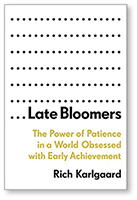
Late Bloomers: The Power of Patience in a World Obsessed with Early Achievement
by Rich Karlgaard, Currency,
New York, N.Y., 2019, 294 pp. with index, $28 hardcover
The college admission scandal which came to light in 2019 demonstrates the importance some parents place on children achieving at the highest levels possible at younger and younger ages.
Late Bloomers: The Power of Patience in a World Obsessed with Early Achievement examines the obsession that current society has with “wunderkinds” and over-achieving as a child or young adult and the reasons why parents, educators and society should stop pushing children to achieve and embrace achieving personal success at a later age.
Rich Karlgaard, author, lecturer and publisher of Forbes magazine, says he is a late bloomer. He describes his mediocre college career, floundering experiences as a young adult and his final rise to success as a magazine publisher feeling that his earlier experiences prepared him for his success.
Karlgaard believes the “societal madness for early achievement” has imposed emotional and psychological burdens on families and young children. The cycle starts with entrance into the “right” preschool, acquiring a second language, developing musical abilities or some other skill at the highest level well beyond their developmental age. The pressure never seems to end and is not healthy.
A late bloomer is defined by Karlgaard as “a person who fulfills their potential later than expected,” having talents that aren’t visible to others at the outset. The overemphasis on IQ scores, SAT/ACT performance and early success in any field measure the wrong skills, according to the author. Karlgaard posits that success needs to be sustained past the age of 25 and should be achieved by mature adults who have had the opportunity for exploration, developing the skills of curiosity, compassion, resilience, equanimity, insight and wisdom.
Throughout
Late Bloomers, Karlgaard reiterates the need for society of celebrate the “full range of human abilities.” Parents and educators are reminded to put less emphasis on extreme competition and success at an early age. Adults need to encourage the development the whole child as an individual and on his/her own timeline. This is an interesting book that presents a contrary viewpoint for many. The reality is that most adults are late bloomers. Karlgaard reminds us that as educators we must focus on developing all skills so that all students can be successful and productive citizens for their entire life.
Reviewed by Edythe B. Austermuhl, superintendent, Berlin Township School District, West Berlin, N.J.
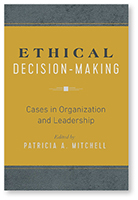 Ethical Decision-Making: Cases in Organization and Leadership
Ethical Decision-Making: Cases in Organization and Leadership
edited by Patricia A. Mitchell, Myers Education Press, Gorham, Maine, 2019, 181 pp., $149.95 hardcover, $40.57 paperback
Ethical Decision-Making: Cases in Organization and Leadership, edited by Patricia A. Mitchell with case study contributions from numerous authors (35 in all), is a book that delves into ethical decision-making in a variety of settings including: K-12 Education (Part I); Higher Education (Part II); Public and Nonprofit Organizations (Part III); Government and Law Enforcement (Part IV); Corporate America (Part V); and the Health Industry (Part VI).
However, regardless of the aforementioned settings, the case studies themselves are pertinent as they apply to helping readers reflect on ethical decision-making in general. The well-written introduction provides the reader a clear definition of what exactly ethical decision-making is while highlighting the importance of ethics, different approaches to ethical decision-making, and why ethical decision-making is important, regardless of the organizational setting.
Each chapter (or Part) begins with an overview clearly describing the setting (see Part I-Part VI) in which the case studies apply. After each of the case studies, each author provides several questions aimed at helping the reader further reflect on the case as well as providing key questions with regards to certain aspects of the case directly aligned to ethical decision-making. This facet of the book is arguably the most beneficial to the reader. The questions encourage the reader to reflect on whether or not the decision made within the case study was indeed ethical, what actions should or could be taken, and what the reader has learned from the case study. By including thoughtful, and in some cases, extremely difficult questions to ponder at the end of chapter (or Part), the book challenges the reader to think more deeply about ethical decision-making, the potential consequences of unethical decision-making, and the ethical dilemmas that may arise in a variety of settings.
With 43 case studies to read and to reflect upon, the reader will most certainly benefit from this text and may even be able to relate to a few of the case studies on a much personal level as it applies to their respective setting. This book undoubtedly belongs on the shelves of leaders in any organizational setting, including the K-12 educational setting, higher education setting, state and local government administration, public and non-profit institutions, healthcare industry, and more. Likewise, this book would serve well those professors charged with preparing aspiring leaders within a variety courses and programs in the higher education setting.
Finally, this book would be an excellent choice for a leadership book study within a school district. With the book’s format of including questions at the end of each chapter (or Part), one could contend that these questions would lead to rich discussions amongst teams of practicing leaders and aspiring leaders (college students) alike.
Ethical Decision-Making: Cases in Organization and Leadership serves as a stark reminder that all leaders, regardless of the organizational setting, must accurately and consistently make decisions that are ethical for all stakeholders involved. To do otherwise is malpractice.
Reviewed by Denver J. Fowler, associate professor of educational leadership and policy studies, Southern Connecticut State University, New Haven, Conn.
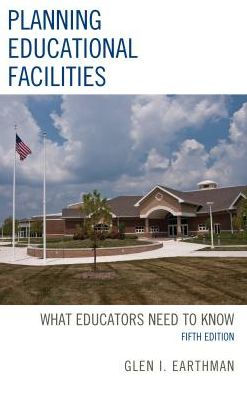
Planning Educational Facilities: What Educators Need to Know, Fifth Edition
by Glen I. Earthman, Rowman & Littlefield, New York, N.Y., 2019, 335 pp. with index, $50 softcover
Glen Earthman, professor emeritus at Virginia Polytechnic Institute, has conducted research on educational leadership and school planning for over 40 years. His textbook on educational facilities, now in its fifth edition, provides a comprehensive overview of planning and caring for school buildings, including the role of long range planning, capital improvement programs, facility construction, and safety and energy considerations.
In addition to providing a listing of policies and procedures that should be in place in the district, Earthman describes a variety of plans to address facility needs, never assuming that the reader has a prerequisite knowledge of the nomenclature and considerations for various types of planning. The text provides a rationale for the development of long-range plans to ensure that a district’s school facilities are maintained properly and that significant renovations or replacements are conducted when needed.
Later chapters walk the reader through a facility construction project, from site selection to employing an architect, bidding, contracting, construction, and commissioning. The text makes connections between instructional program development and facility design, the need for careful student enrollment projections, the evaluation of existing facilities, and considerations for financing.
Earthman reminds his readers that “students in marginal facilities do not do as well on achievement examinations as students in good facilities.” He provides a strong foundation for those interested in district administrative positions and those in such positions with goals to improve instructional settings to ensure that students are safe, warm, and inspired.
Reviewed by Judy Paolucci, superintendent, Smithfield, R.I.
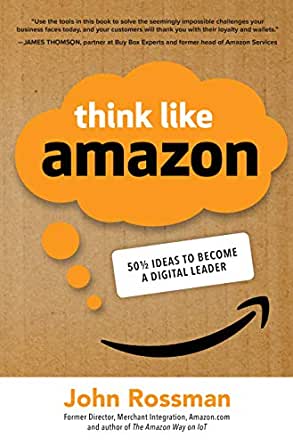
Think Like Amazon: 50½ Ideas to Become a Digital Leader
by John Rossman, McGraw-Hill Publishing, New York, N.Y., 2019, 282 pp., $28 hardcover
Think Like Amazon: 50½ Ideas to Become a Digital Leader is an interesting look at the Amazon mindset by John Rossman, and Amazon executive who served inside the organization and understands it well. Many of the ideas presented reveal how Amazon’s growth was no accident. Nontraditional leadership practices are needed to make the digital leap.
Rossman’s basic premise is to stay focused on the customer’s needs. He gives an interesting example of how pharmacies might be handled more efficiently in the digital age. As a thought experiment, this proves helpful and helps make the book useful to a broad audience.
For superintendents, Think Like Amazon requires some adaptation. For example, one idea is Blow Up the Org Chart. This is followed by an explanation that bureaucracy is a barrier to creativity in the digital world. Another idea, to use metrics, showed insight into how these might be more than useful. The 50½ ideas are spotty, but if you’re searching for a quick read that will set your mind thinking, then Think Like Amazon is for you.
Reviewed by Kenneth E. Hoover, retired superintendent and co-author of The Superintendent and the CFO: Building an Effective Team
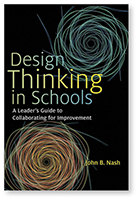 Design Thinking in Schools: A Leader’s Guide to Collaborating for Improvement
Design Thinking in Schools: A Leader’s Guide to Collaborating for Improvement
by John B. Nash, Harvard Education Press, Cambridge, Mass., 2019, 171 pp., $60 hardcover, $31 softcover
Design Thinking in Schools is all about discerning what needs changed in our schools and lays out a tested process to achieve success.
Author John B. Nash is an associate professor of educational leadership at the University of Kentucky, where he specializes in the design and prototyping of innovations in education. He also is founding director of the Laboratory on Design Thinking in Education at University of Kentucky and former associate director for evaluation at the Stanford Center for Innovations in Learning.
Design thinking provides educators with a process by which they can look inside their own community as a resource for ideas, experience and creativity. Nash introduces a framework and process that has proven helpful and successful for educational leaders to create positive change within their schools.
Nash isn’t delivering a cookie-cutter program but something easily adaptable by users to meet the specific needs of a school. That is why so many of the canned programs or those used by other schools often fail at your school. They fail to pinpoint the specific needs and solutions for your situation.
One key for this process to work is for teacher leaders who use design thinking to realize their students are in the trenches, the end users who see things no teacher or administrator can see. As a former superintendent, I find this makes so much sense and, for the most part, schools seeking change do not use this invaluable resource and often miss the target.
I found the book amazing as Nash provides the overarching process along with templates, detailed guidelines, obstacles and how to overcome them, how to choose and train your design team, and the six-step design thinking phases.
Reviewed by Jim D. Hattabaugh, educational consultant, Fort Smith, Ark.
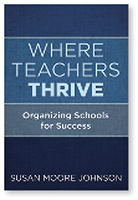 Where Teachers Thrive: Organizing Schools for Success
by Susan Moore Johnson,
Where Teachers Thrive: Organizing Schools for Success
by Susan Moore Johnson, Harvard Education Press, Cambridge, Mass., 2019, 295 pp. with index, $66 hardcover, $34 softcover
In
Where Teachers Thrive, Susan Moore Johnson continues her analysis of the teaching profession, research that started when she co-founded Next Generation of Teachers with three colleagues at Harvard Graduate School of Education in 1998.
In this phase, Johnson critiques the work of teachers, school buildings and principals in a large urban school district in Massachusetts. The author scrutinizes the proactive and reactive responses of this district in respect related to No Child Left Behind.
She infuses the book with rich examples of statistical research and anecdotal stories that highlight the success and shortcomings of individual educators, leaders and their schools.
Where Teachers Thrive probes all aspects of individual teacher responsibilities and even includes a view on teacher’s pay.
This book is written for K-12 educators at all levels, albeit it’s better suited for building leaders and teacher teams.
Reviewed by Rob Clark, superintendent, Sequim Unified School District, Sequim, Wash.
Why I Wrote this Book ...
 “Many times I learned what NOT to do with my on-the-job training. … Unfortunately, too many of the administrators I worked for modeled characteristics or attributes I found undesirable. … This book is intended to provide clear, concise and useful information to be successful in your school or district. Secondly, it is intended to make you think and push you. I’m hoping it may agitate you enough to push you out of your comfort zone.”
“Many times I learned what NOT to do with my on-the-job training. … Unfortunately, too many of the administrators I worked for modeled characteristics or attributes I found undesirable. … This book is intended to provide clear, concise and useful information to be successful in your school or district. Secondly, it is intended to make you think and push you. I’m hoping it may agitate you enough to push you out of your comfort zone.”
Michael J. Hynes, superintendent, Port Washington, N.Y., and AASA member since 2013, on writing
Staying Grounded: 12 Principles for Transforming School Leader Effectiveness (Code Breaker Publishing, 2020)
One-to-One Initiatives
A doctoral dissertation completed in 2020 by Ted Smith at Baylor University describes the experiences of six Texas superintendents who have implemented and sustained a one-to-one technology initiative in their school districts.
Through semi-structured interviews, archival data and questionnaires, the study developed a framework consisting of three parts. It examined the district program’s impact on students, impact on teachers and fiscal responsibility.
Upon analysis of data, nine themes emerged, which the researcher said were reoccurring for the six superintendents as they moved through their one-to-one initiatives.
Copies of “The Lived Experiences of Six Superintendents Who Successfully Implemented One-to-One Technology: A Case Study” are available from ProQuest at disspub@proquest.com or 800-521-0600.
BITS & PIECES
Remote Learning
The Regional Educational Laboratory Mid-Atlantic has
released a report on the implications of remote learning on students.
The report says students need real-time interaction with teachers and ongoing feedback and support.
Health Care Careers
The National Center for Education Statistics
released a report of high school students’ expectations for having a career in health care, using data from a 2009 initial study and follow-up in 2012.
Twelve percent of high school freshman in 2009 and 2012 expected to have a job in health care by age 30. However, 20 percent of male students compared to 4 percent of female students had the same expectation.
Data Projections
The National Center for Education Statistics released its annual report
“Projections of Education Statistics to 2028,” which provides national data for elementary, secondary and postsecondary schools.
Expenditures per pupil increased 11 percent between 2003-04 and 2015-16 and are projected to increase another 12 percent by 2028-29, with consideration for inflation.
STEM Careers
A new report from the Institute of Education presents data on 15-year-olds who expected to have a career in health or science, technology, engineering and math fields.
About 40 percent of 15-year-old students expected a career in health or STEM by age 30. Female students reported health career expectations at 37 percent, while only 9 percent of male students expected a career in health.
Publication Honors
Association Media and Publishing named
School Administrator the Silver Medalist in the 2020 EXCEL Awards competition’s Magazine–General Excellence category for associations with between 10,001 and 20,000 members. The entry consisted of the May, June and August 2019 issues. It’s the first time our magazine has received this recognition.
In addition, both
School Administrator magazine and Conference Daily Online received the Award of Excellence, the top level of recognition, in the National School Public Relations Association’s 2020 Publications and Digital Media Awards competition.
NSPRA’s annual contest honored
School Administrator in the magazine category for its June 2019 issue, which addressed the changing forces of parenthood and childhood.
Conference Daily Online was honored with the Award of Excellence in the newsletter/external audience category for its daily multimedia coverage at AASA’s National Conference on Education in San Diego in February.
Member Podcasts
If you’re an AASA member who regularly produces a podcast, AASA would like to know about it for purposes of compiling a website directory.
Contact Gayane Minasyan.
Pandemic Resources
AASA and the Association of School Business Officials International have created a
Frequently Asked Questions document to cover school districts’ COVID-related education policy needs.
The resource addresses questions relating to school nutrition, ESSA, IDEA, CARES Act Funding and school procurement, human resources and employee benefits.
SEL Cohort
AASA’s Social and Emotional Learning cohort started in July with virtual meetings on the third Wednesday of every month from 2-3 p.m. ET.
Participants work with colleagues to implement the new AASA/CASEL Toolkit and curriculum modules, participate in virtual site visits and develop case studies to benefit student, staff and family engagement.